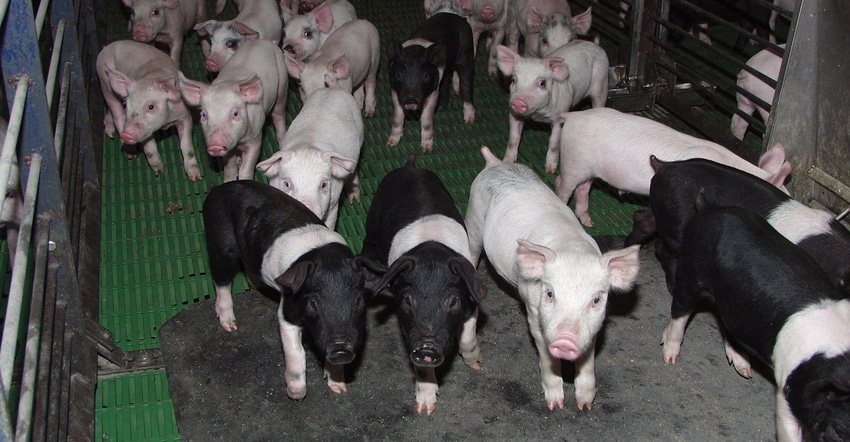Investigating mortality patterns and associated costs in swine production
Studying historical production records can provide clues as to the presence of mortality patterns, and what factors are associated with those patterns.
January 7, 2020

Excessive mortality is an expensive event within commercial pork production. Oftentimes, it is identified by a "spike," which prompts some degree of veterinary investigation, with or without the discovery of a pathogen or pathogens for which an intervention is created and, hopefully, implemented.
A production company asked this question of us: "Is there a pattern to our mortality?" We were then given the complete close-out and weekly death loss data from 60 lots of wean-to-finish pigs, sourced from the same six 5,000-sow farms, with the intent to answer their question. Then, differences in costs and revenue were modeled to determine economic differences between mortality patterns. Finally, if there were economic differences we sought to determine what housing/management factors could be associated with the patterns.
There were three distinct mortality clusters (patterns) demonstrated from each of the 60 lots' weekly report of deaths (Figure 1, from Mehling, et al, 2019).

Each cluster's 1,000-pig modeled economic summary was different (Mehling, et al., 2019) per pig marketed. There was $24.59 profit difference per pig advantage of Cluster II over Cluster I and $7.27 per pig advantage of Cluster II over III.

These factors were studied: average starting weight, number of head placed per lot (n), and pen area per pig (calculated from the total head placed and the pen area for each barn). Lower starting weight, lower number of head placed and greater pen area per pig were associated with the lower mortality of Cluster II compared to that of Clusters I and III.

These results suggest the importance of systematically studying historical production records, knowing if mortality patterns exist, and what factors are associated with those patterns.
A complete article on this research can be found online.
Reference cited
Mehling, S., A. Henao-Diaz, J. Maurer, E. Kluber, R. Stika, C. Rademacher, J. Zimmerman, L. Giménez-Lirola, C. Wang, D.J. Holtkamp, R. Main, L. Karriker, D.C.L. Linhares, M. Breuer, C. Goodell, and D. Baum, Mortality patterns in a commercial wean-to-finish swine production system. Vet Sci, 2019. 6(49): p. 1-11.
Sources: Samantha Mehling, Alexandra Henao-Diaz, Rachel Stika, Chris Rademacher, Jeff Zimmerman, Luis Giménez-Lirola, Chong Wang, Derald Holtkamp, Rodger Main, Locke Karriker, Daniel Linhares, Mary Breuer, David Baum, Jeremy Maurer, Ed Kluber and Christa Goodell, who are solely responsible for the information provided, and wholly own the information. Informa Business Media and all its subsidiaries are not responsible for any of the content contained in this information asset.
You May Also Like



